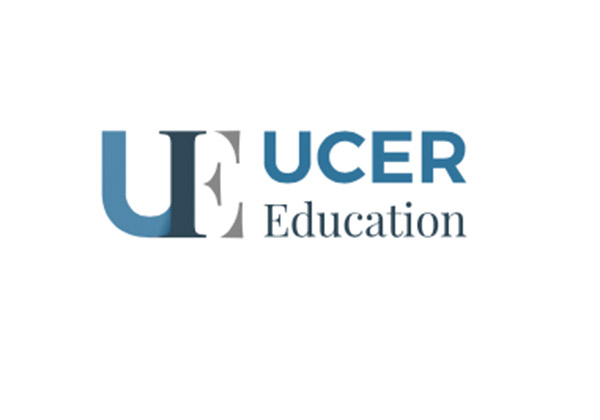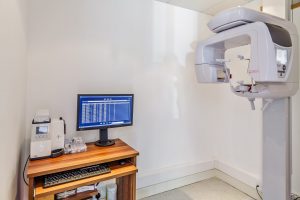Improving diagnostic image interpretation – Professor Cemal Ucer (BDS, MSc, PhD, Oral Surgeon, ITI Fellow)
Featured Products Promotional FeaturesPosted by: Dental Design 27th September 2019

 Cone Beam Computed Tomography (CBCT), is useful across many areas of dentistry – including when diagnosing certain oral and maxillofacial pathologies and planning surgeries. Assessing bone quality and identifying vital structures such as the mandibular canal, blood vessels and maxillary sinus floor are important to reduce the risk of life threatening and life changing complications. CBCT imaging can be an invaluable tool when assessing and planning oral surgical procedures and dental implant surgery.[1]
Cone Beam Computed Tomography (CBCT), is useful across many areas of dentistry – including when diagnosing certain oral and maxillofacial pathologies and planning surgeries. Assessing bone quality and identifying vital structures such as the mandibular canal, blood vessels and maxillary sinus floor are important to reduce the risk of life threatening and life changing complications. CBCT imaging can be an invaluable tool when assessing and planning oral surgical procedures and dental implant surgery.[1]
However, even the best imaging technologies and treatment planning software available still require the human component to be safe and effective. Training and experience is essential to usefully interpret CBCT images. Full reporting of CBCT by a qualified clinician is mandatory. For the treating surgeon, training and experience is essential to usefully interpret CBCT images in order to carry out the surgery with precision and accuracy. Referring clinicians must also have sufficient training to ensure that the operator who takes the scan has all the necessary information. This requires including precise instructions such as the justification criteria and intended purpose, as well as the ROI and FOV when referring for CBCT to maximise the benefits whilst minimising the risks.
A recent study concluded that placing implants without first performing adequate radiological assessment is the leading cause of iatrogenic damage to the trigeminal nerve. The authors assert that this is a preventable complication; by using CBCT in concert with specific training into proper interpretation of the scans, better treatment planning can be achieved thus minimising the risk of serious injury to the blood vessels and nerves particularly when operating in the posterior mandible.[2]Ucer et al have published an evidence based protocol of risk management to avoid such complications and highlighted the importance of accurate diagnosis, imaging and interpretation.[3]
Currently, CBCT is not mandatory for dental implant surgery, but it is becoming an increasingly indispensable aid to diagnosis and treatment. However, the clinician must follow the guidelines and justification criteria when subjecting patients to such invasive investigations, using well-established ALARA principle and considering dose reduction options by reducing FOV.
For those looking to develop their confidence in the field, the comprehensive Postgraduate Certificate (PG Cert) programme (EduQual level 7) offered by Ucer Education will bring your knowledge and skills to the next level. This 12-month course is led by the eminent Professor Cemal Ucer and delivered in state-of-the-art facilities, enabling you to gain experience with cutting-edge equipment while you advance towards a formal qualification in implant dentistry. From interpreting CBCT scans to advanced surgical and prosthodontically-guided 3D implant planning and placement, this course covers a wide breadth of topics in detail.
Dental implants are an excellent treatment modality for many partially and fully edentulous patients. However, the safe provision of implants requires careful assessment, diagnosis and treatment planning, as well as meticulous attention to detail in every aspect of patient care. The best results can only be reliably achieved by marrying knowledge and surgical skill with accurately interpreted diagnostic imaging.
For more information on the PG Cert in Implant Dentistry, please visit
www.ucer.education or call 0161 237 1842
Professor Cemal Ucer (BDS, MSc, PhD, Oral Surgeon, ITI Fellow)

References
[1]Fokas G., Vaughn V., Scarfe W., Bornstein M. Accuracy of linear measurements on CBCT images related to presurgical implant treatment planning: a systematic review. Clinical Oral Implants Research. 2018; 29(Suppl. 16): 393-415. https://doi.org/10.1111/clr.13142May 3, 2019.
[2]Yilmaz Z., Ucer C., Scher E., Suzuki J., Renton T. A survey of the opinion and experience of UK dentists: part 1: the incidence and cause of iatrogenic trigeminal nerve injuries related to dental implant surgery. Implant Dentistry.2016; 25(5): 638-645. https://doi.org/10.1097/ID.0000000000000472May 3, 2019.
[3]Yilmaz Z., Ucer C., Scher E., Suzuki J., Renton T. A survey of the opinion and experience of UK dentists: Part 3: An Evidence Based Protocol of Surgical Risk ManagementStrategies in the Mandible. Implant Dentistry.2016; 25(5): 638-645.https://doi.org/10.1097/ID.0000000000000472May 3, 2019.








